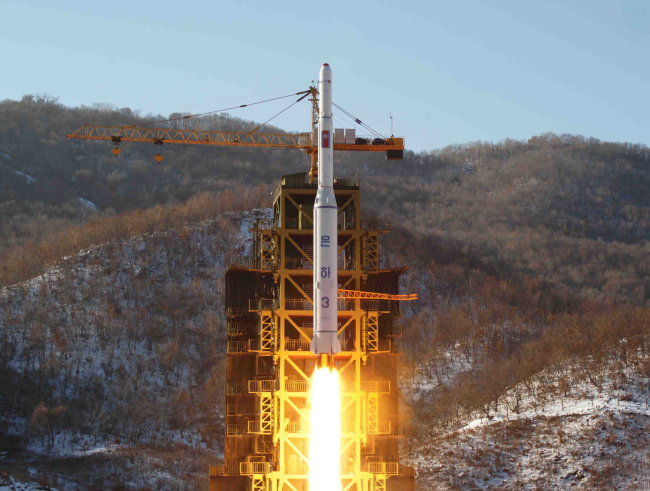
<관련 영문 기사>
‘N. Korea has technology to build ICBM and components’
By Song Sang-ho
North Korea has secured technology to develop 10,000-km-range intercontinental ballistic missiles and most of their parts, the Defense Ministry concluded Monday.
Announcing its final analysis of North Korean rocket debris retrieved from the West Sea last month, the ministry said Pyongyang had imported 10 ancillary parts from China and four European Union countries to make the three-stage rocket.
The ministry did not disclose the names of the EU countries out of concern of possible diplomatic difficulties with them. The parts can also be used commercially and there were no parts made in Middle East states, it added.
The authorities are investigating whether the exports contravene U.N. resolutions and other international rules of arms control that ban any missile-related transactions with the North.
“Most of the core components for the long-range rocket were indigenously produced. But the North used imported secondary parts such as the temperature sensor, direct-current converter, pressure sensor and electrical wires,” a ministry official said on condition of anonymity.
“Despite international sanctions that restrict its efforts to introduce advanced technology and components from overseas, it has greatly advanced its missile technology based on the experience from many experiments.”
More than 50 experts including those from the U.S. have analyzed six pieces of the rocket’s first-stage engine parts since Dec. 14. The state-funded Agency for Defense Development, the Korea Defense Intelligence Command, the Korea Aerospace Research Institute and other related agencies participated in the analysis.
The debris was recovered in waters some 160 km away from Gunsan, North Jeolla Province after the successful rocket launch on Dec. 12.
Seoul officials believe there are no imported parts of the rocket that violate the Missile Technology Control Regime.
The MTCR bans the export of any missile or unmanned aerial vehicle with a range of 300 km and a payload weighing more than 500 kg. Seoul joined the program in 2001, becoming the 33rd official member of the U.S.-led program
Observers said that the international community could discuss whether the parts the North imported to build missiles or anything under the name of satellite development should be added to the list of items controlled under the MTCR.
Seoul authorities are also looking into whether the foreign countries from which the North imported some of the parts violated U.N. Resolution 1874 that bans arms transactions with the North.
As there were no weapons or parts that breach the MTCR, observers say that it is unlikely that those countries had violated the resolution.
The North’s satellite launch in December has deepened security concerns on the peninsula and beyond as it showed it is closer to developing delivery vehicles for nuclear warheads.
Seoul, Washington and Tokyo have been seeking to adopt stronger international sanctions against the North. Reports say that the U.N. Security Council could increase the number of North Korean organizations and individuals subject to anti-Pyongyang sanctions and make additional provisions that toughen economic and financial sanctions against the communist state.
(sshluck@heraldcorp.com)





